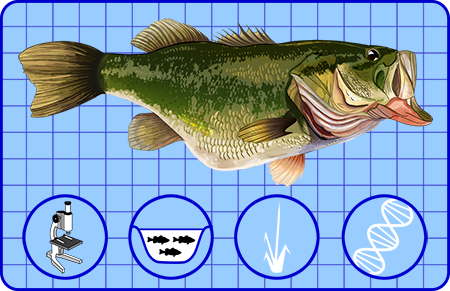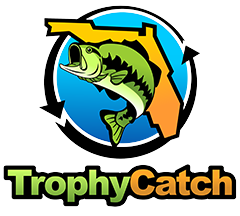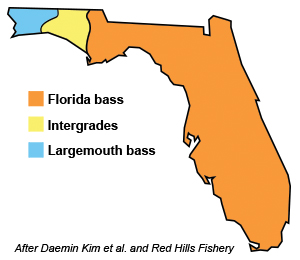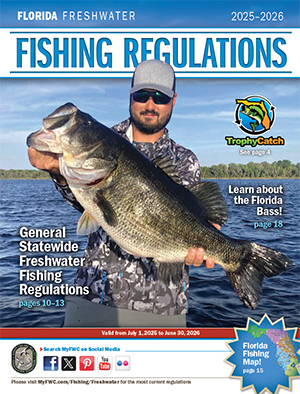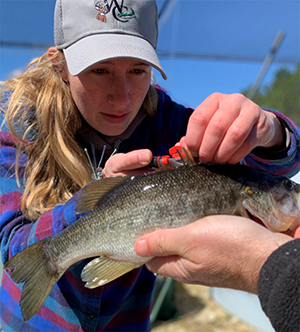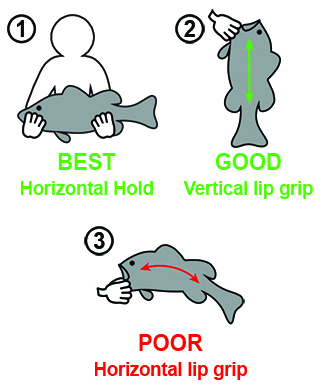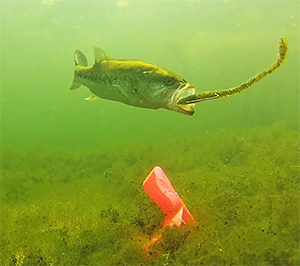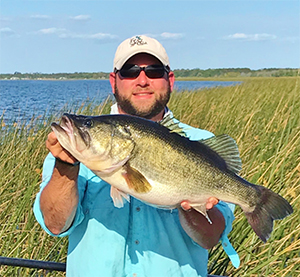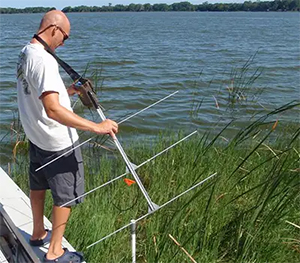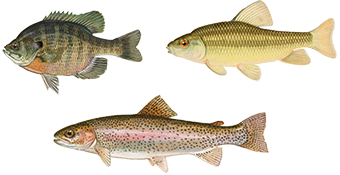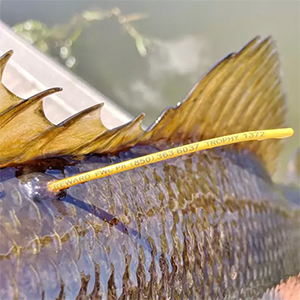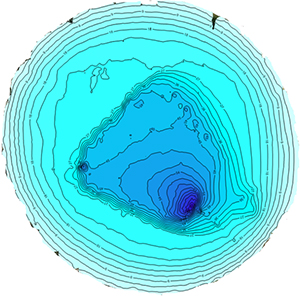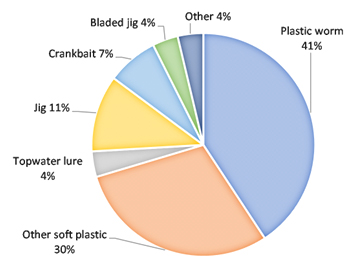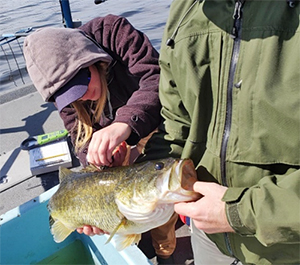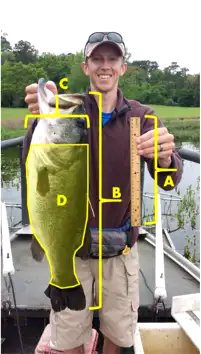The Florida Bass
The American Fisheries Society established the Florida bass as a separate species from the largemouth bass. This means that in most of Florida (except the western panhandle, see map) what was known as a largemouth bass is now called a Florida bass. What was formerly known as the northern largemouth bass is now referred to as the largemouth bass (Micropterus nigricans) and what was formerly known as the Florida strain largemouth bass is now called the Florida bass (Micropterus salmoides). The two species cannot be distinguished visually and genetic testing is required to confirm the species. Other than a new name, this will not affect anglers in Florida in terms of regulations, state records, or participation in TrophyCatch. FWC regulations have been updated to reflect the name change and either Florida bass or largemouth bass are eligible for the Florida State Record Bass or TrophyCatch.
Special Bass Regulations
Special regulations on specifically managed waters target management strategies designed to produce the very largest trophy bass.
Nonlethal Ageing
Knowing the age of a bass is critical to understanding bass growth rates and bass populations as a whole. Traditionally a small percentage of trophy bass had to be collected for removal and examination of otoliths, or ear stones, to determine ages. Innovative new research is now allowing the age of a bass to be determined from a simple spine clip. The bass is released otherwise unharmed to reproduce and pass its trophy genes on to the next generation, as well continuing to contribute to Florida's legendary bass fishery.
Fish Handling Study
Concerns over how anglers handle bass during catch-and-release fishing and the desire to provide anglers with best handling guidelines inspired FWC and University of Florida biologists to develop a research project to critically evaluate three common holding techniques for bass. The three holds included (1) Bass held with two hands and fully supported, (2) Bass held by the jaw with a lip gripping device, and (3) Bass held by the jaw with only one hand and rotated to a horizontal position by leveraging the jaw. None of the holds tested caused any permanent damage, and there were no differences among the holding techniques for bass feeding or survival. Bass held with two hands and fully supported recovered fastest when released, in less than 10 seconds on average, which we recommend. We do not recommend holding a bass by the jaw with one hand in a tilted, fully horizontal position.
Bed Fishing for Bass
This study indicated that bed fishing for Florida bass can influence the nest success of individual fish, but not reproductive success or recruitment at the population level. Whether they were fished or not, beds of wild bass had a success rate of 30%. When angling pressure is high, fish may not reproduce as many times as those that are not fished (only seen in hatchery ponds).
TrophyCatch Eyeball Challenge
FWC biologists designed the TrophyCatch Eyeball Challenge to assess anglers ability to accurately guess the weights of trophy bass in photos across an array of sizes of both bass and people holding them. The study was implemented as a series of online surveys during the summer of 2020. After thousands of anglers completed the survey, the results revealed that it is a lot harder to guess the weight of a bass in a photo than most people initially think. On average, guessing error was plus or minus a little more than 2 pounds, while the top 5% of participants shaved that error down to about plus or minus 1 pound. Interestingly, angler avidity (beginner, intermediate, avid) had no statistical bearing on guessing accuracy. What did matter was how far the person in the photo extended his or her arms while holding the bass. Surprisingly, anglers were statistically more accurate in guessing the weights of bass held with full arm extension toward the camera compared to photos in which the bass was held closely the person with minimal arm extension. For bass held close, anglers underestimated those bass by over 1.25 pounds on average. The bottom line is that no matter how good you are at catching bass or how long you have been fishing, a variety of factors makes it hard to accurately guess the weight of a bass from only a photo.
Studying Bass Survival Using Radio Telemetry
There is little information on the mortality and behavior of trophy bass in Florida as they are rarely collected by sampling gear. Survival and behavior of trophy bass were assessed using surgically implanted radio tags in Florida Bass larger than eight pounds at Lake Eustis and Lake Dora. The study compared the environmental conditions (e.g., depth, water temperature, and dissolved oxygen) used by trophy bass at Lakes Eustis and Dora with Kingsley Lake. Total annual mortality for the first three years of tracking was estimated at 81% (21% fishing mortality and 60% natural mortality). Water temperature monitoring at fixed locations did not indicate stratification in Lake Eustis and Dora, and water temperatures experienced by fish were similar to those available in the lake. This supports the theory that in contrast to Kingsley Lake, fish in these shallow eutrophic lakes have no refuge from high water temperatures in summer months, which may result in high mortality rates observed for large bass.
Bass Diet Trials
What does it take to grow a trophy bass, Floridas most popular freshwater sportfish? The research arm of the Florida Trophy Bass Project is working to answer that question through an innovative new study. A series of bass feeding trials conducted over three consecutive years evaluated which forage species provides the greatest growth rates of adult Florida bass, and this research is ongoing. The project is focused on bluegill and lake chubsucker as abundant Florida native species that are common prey of Florida bass, as well as rainbow trout due to its high caloric value and historic link to trophy bass production in other locations.
Trophy Bass Tagging Study
To better understand catch, release, and harvest rates for trophy bass in Florida, FWC biologists began a long-term, statewide tagging study for trophy bass in 2011. The tagging study process begins when biologists encounter and tag Florida Bass that are 8 pounds or heavier. Biologists then compile the results of all reported tags each year to estimate the percentage of trophy bass caught annually; the percentage of all trophy bass in Florida that are caught and harvested; and the percentage of caught trophy bass that are subsequently released alive back into the waterbody from which they were caught.
The Riddle of Kingsley Lake
Among Florida waterbodies, Kingsley Lake stands out for two reasons: it is unusually deep, and it is home to an abundance of exceptionally large Florida Bass. Anglers at Kingsley Lake have pushed the TrophyCatch Hall of Fame tally to 22, more than any other Florida lake. Several of those exceeded 15 lbs., a mark rarely eclipsed in modern-day Florida. Biologists hypothesized that bass might use Kingsley Lakes deeper and cooler layers of water as thermal refuge during summer. They surmised that bass that are able escape the stresses of summertime high water temperatures may experience faster growth or better long-term survival, allowing more individuals in the population to reach trophy size.
TrophyCatch Hall of Fame 100
During Season 9 in 2021, TrophyCatch anglers reached a new milestone, surpassing 100 approved Hall of Fame (HOF) catches weighing 13 pounds or more. To celebrate this incredible achievement, Hall of Fame anglers were asked to participate in a survey to gather unique information about pursuing and catching Floridas largest bass. Several anglers have multiple HOF entries, and there were 78 anglers total who contributed to the 100+ HOF entries. Unprecedented data on these biggest of the big was collected regarding catch location, habitat, month of catch, time, depth, and lure used. Anglers will be interested to note that the plastic worm accounted for nearly half (41%) of HOF catches.
Bass Annual Growth Rate
It is often assumed that most female Florida bass experience consistent weight gains over their lifetime and have the potential to attain trophy size. However, limited data from several trophy bass tagging studies indicate no clear pattern in whether fish will gain, maintain, or lose weight from one year to the next. FWC fisheries biologists explored annual growth of large female Florida bass greater than 500 mm (19.7") at Lake Dora by tagging the bass each spring and assessing the change in weight of recaptured fish. From recaptures, within each year, results demonstrated relatively consistent population estimates for bass over 500 mm (19.7") with 1,139 bass collected in 2019 and 1,260 bass in 2020. Among the 17 bass recaptured, one-year growth averaged 0.4 lbs. and seven bass (41%) had negligible growth or lost weight.
TrophyCatch Bass Photo Analytics
TrophyCatch relies on photo documentation of bass weight for program qualification. Originally, the program required participants to photo document weight and length of bass to qualify for Lunker and Trophy levels, and Hall of Fame level bass required on-site verification by a Florida Fish and Wildlife Conservation Commission (FWC) biologist. Season two of the program transitioned to requiring only a single weight-documentation photograph for all three tiers of recognition to simplify the process. This shift reduced handling of bass and time out of water, and made it easier for anglers to participate. However, by lifting the requirement of length-documentation photos it left TrophyCatch biologists with less information to help verify reported weights of entrant bass.
Researchers begin investigating alternative methods of verifying length of and weight of trophy bass. They developed a technique referred to as Trophy Bass Photo Analytics to measure bass length, body depth, or cross-sectional area in a photo, and these values can then be entered into equations that estimate bass weight. FWC trophy bass photo analytics equations are based on nearly 200 bass that were photographed, weighed, and measured by biologists during 2014 to 2015. To make sure that these methods were applicable to bass of nearly all sizes, they included bass from 2.2 to 13.1 lbs.; however, 65 percent of the bass were greater than 8 lbs., since the project focus was to help verify weights of trophy bass. Although the core process of trophy bass photo analytics has been the same throughout development, researchers have continuously honed and diversified the technique to make it more accurate.
